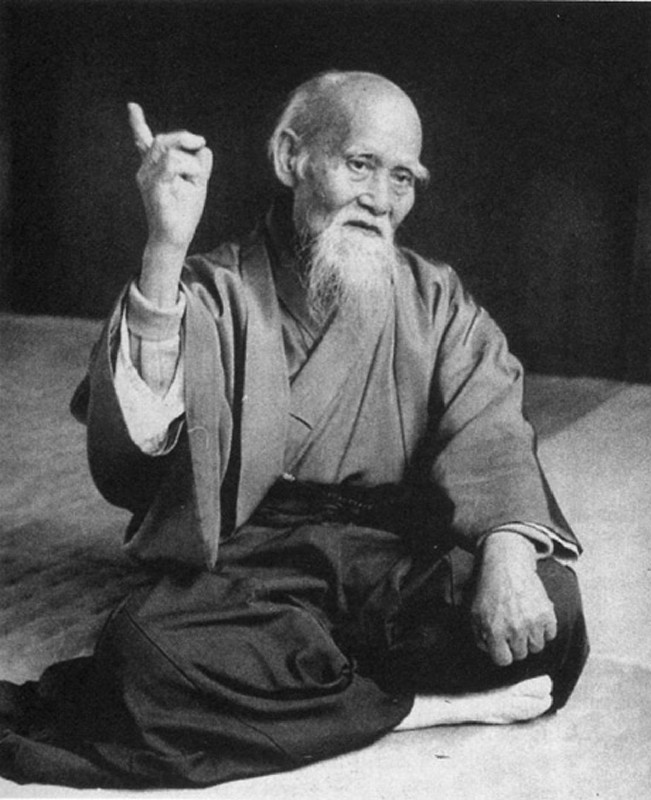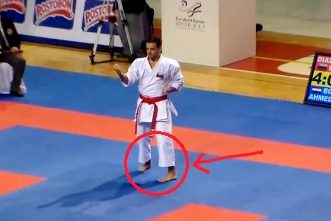It’s been a while since I answered awesome reader questions in public.
So it’s about that time again.
Last week I received this e-mail.
It went:
Jesse-san! Good day to you a lot!!! I’m one of your fascinating fans of your articles!! Every time I open the Internet my homepage is Your site! I really enjoy reading your articles a lot! Especially when it concerns about the meticulous parts all about kata…. by the way I’m a Shorin Practitioner but I’m not the kind that places itself inside the box =], get what I mean? =] Looking and knowing a lot of kata from the other styles especially in shito ryu gave me a broader outlook or view for my own Shorin style… Jesse-san sorry if I want to take some part of your time… Or its just a little request from your fan… hehehe Can you elaborate some deeper info about rhythm in kata?
Of course, in the course of my reading your articles, there where some artices that mentiones about the rhythm… like the interview with Lucio Maurino… I read also some articles that the “1-2-3” rhythm is a good guide in placing a basic rhythm in a kata… and the “1…2-3” or “1-2….3” may be applied for an advance rhythm… I know that these topics are not much discussed out there… but I hope… that you Jesse-san could share a lot about this… Hoping for your soon reply and thank you for actually reading this message from a guy like me… Thanks…!! —ODIE—
Dear Odie-san,
On behalf of the whole KbJ sect/cult community of passionate followers; thanks a lot for the topic suggestion!
When it comes to Karate in general, and kata in particular, the concept of rhythm is something I’ve always found to be one of those crucial elements really playing a part when it comes to distuingishing between real Karate experts and fake Karate phonies.
Because, the way I see it, an elevated feeling for rhythm in Karate can only be developed through repeated exposure and continual practise (also known as experience) – which is getting rarer and rarer these days. And yes yes, although some kids are apparently born with an innate talent for finding rhythm in things like music and dance, I believe that for the regular Karate aficionado out there, who wishes to understand the concept of rhythm in Karate a bit better, it’s best if we simply break down the thing into its two basic categories.
That’s right.
I believe there are two fundamental categories of rhythm in kata.
These two categories have a set of followers each, who unfortunately rarely understands, knows or cares about the other category (unless they’re Karate Nerds™, obviously). This schism sometimes creates trouble in heated Karate discussions, so I hope we can clear some smoke with this article. Because no concept of rhythm in kata is actually better than any other – it’s just different.
And different is the new sexy.
But I digress.
So now, let’s look at my two basic categories of rhythm in kata. As you read this; try to envision your own Karate quest in the back of your mind, to see where your own idea of best expressing your understanding of kata fits in.
Let’s go:
Rhythm in Kata #1: “Fight”
The first kind of rhythm that I believe you should be taught (and teach) is based on the presumption that kata is a vehicle for storing mnemonic self-defense templates aimed at saving your butt in a possible physical altercation.
(By the way, I love the word mnemonic.)
Thus, the rhythm you have between movements in a kata should correspond to the respective meaning of each and every technique.
Obviously, this requires you to actually know the underlying meaning of every technique in the kata (or at least a majority of them) and how/why they are interlinked in series or combinations.
In other words, you need to know the bunkai of a kata in order to have a proper rhythm.
I strongly believe that as we gradually progress in elevating our understanding of a kata’s meaning (bunkai), this understanding should be shown through a shift in our expressed rhythm of the kata. That’s why a kata should look so different a year after you’ve learnt it: Not only because you are faster, stronger and more flexible (which I hope you are after a year of training!) – but more importantly because you have understood and internalized the relationship between the combined techniques of the kata… and therefore changed the rhythm.
- From ‘technique-pause-technique’
- …to ‘bunkai-pause-bunkai’.
In other words, since kata is originally meant to be a pragmatic record of several self-defense situations, it makes sense to practise these self-defense situations in their whole – without adding unnecessary pauses or stops in places that have no meaning from a practical point of view – and do each technique with full speed and power (as suits each specific bunkai).
Pauses in kata, then, are meant to be nothing more than natural transitions between the different “invisible opponents” in your kata – that’s it.
And the overall rhythm of your kata depends entirely on how fast you choose to dispose of these invisible opponents.
That was the first basic category of rhythm in kata, also known as the “fight” rhythm.
Here’s the second one:
Rhythm in Kata #2: “Art”
Try this:
- Imagine an action movie with no love scenes.
- Imagine a song with no bridge between the hook and verse.
- Imagine a kata performance without changes in tempo.
Pretty boring, huh?
That’s right.
Because if you consider kata a physical expression of art (as in ‘martial art’), then you need to approach the concept of rhythm in kata just like Beethoven, Picasso, Shakespeare or Spielberg approaches their art forms.
As providing a mind-blowing experience.
Look, I saw the latest Batman movie last week – and even though it’s almost three hours long, it literally felt like 20 minutes!
 Why?
Why?
Because the rhythm of the movie had a hold on me.
So why shouldn’t a kata be the same?
People who watch your kata should be blown away – every frickin’ time – even if the kata is a whoppin’ four minutes long. When you’re done, they should go: “What? Is it already over? I want to see that again!”.
Approaching kata like an art form (your physical expression of the martial art of Karate) requres you to see the kata as a whole. It requires you to take a step back and really consider what parts should be slower, what parts should be faster, where the kiai should be, where the stops should be, where the climax should be, how the crescendo/diminuendo should play out, and a whole lot of other elements that make up a great experience in your opinion.
Exactly like photographers, painters, directors, dancers or musicians work with the positive and negative, slow and fast, high and low, hard and soft…
…leaving the observers feeling re-born.
If kata is a martial art, then nothing is set in stone. Nothing is fixed or decided by some higher force, organization or textbook.
This is your show.
Make it one to remember.
_____________
Right.
These were the two basic categories of rhythm in kata, that you surely recognize to some extent from your own approach to Karate.
One based on “fighting” and one based on “art”.
So where is the schism?
Well, the problem arises when people who view the rhythm of kata based on one concept are confronted by the other concept – without really understanding it. But as we all know; Karate is a personal journey where the reason for practising it varies as much as our fingerprints vary.
Each journey is highly unique.
And, depending on how far your have come in your journey, the rhythm of your kata will reflect that.
To finish this off, let’s check out this video of sensei Luca Valdesi, several times WKF world champion in kata. Try to identify which category he belongs to.
(Hint: All you need to watch is his first technique):
The question I think we all need to ask ourselves is:
What category do I belong to – and why?
Let me know in the comment section.



24 Comments